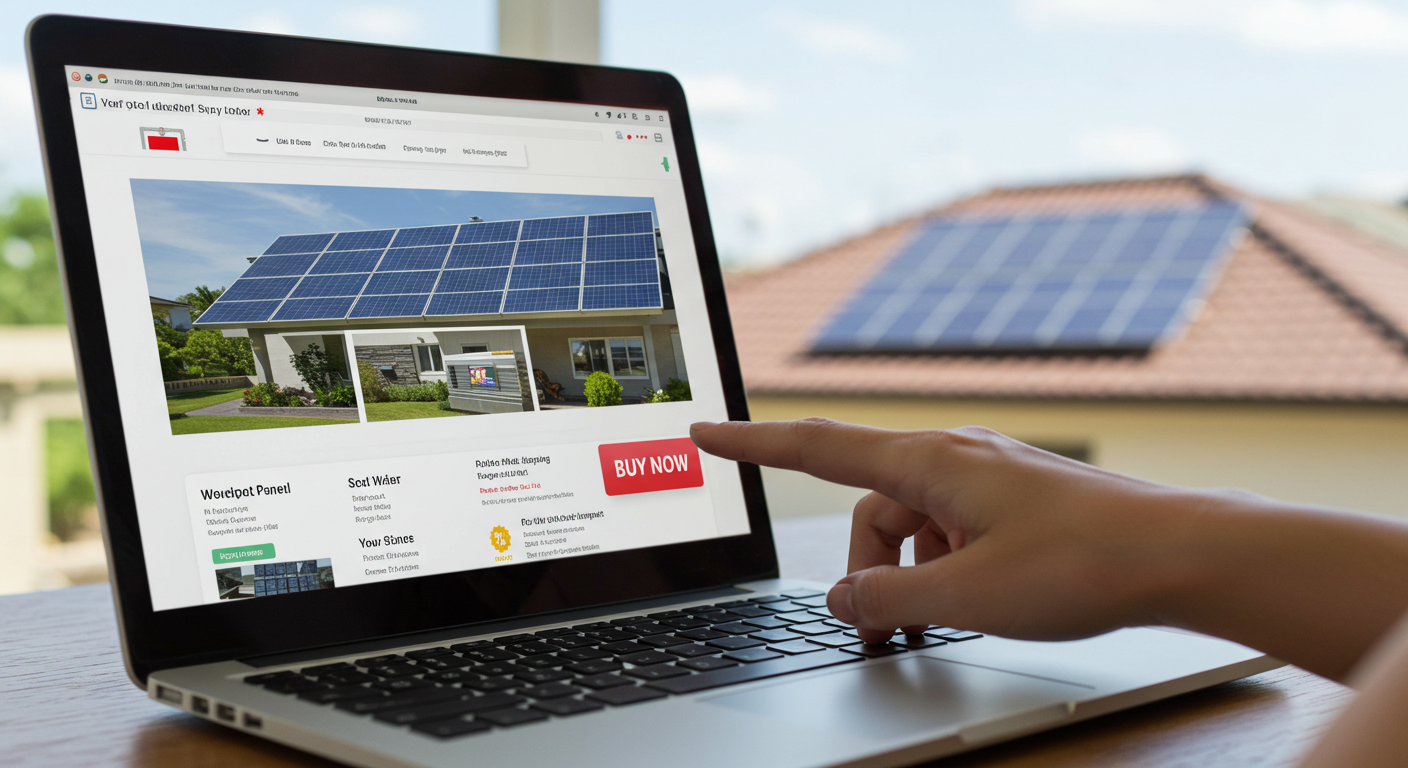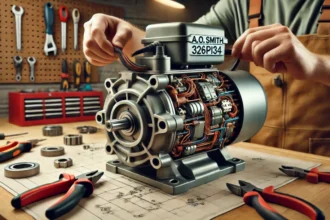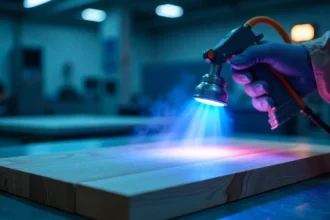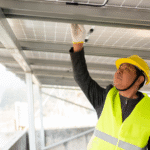Thinking of buying solar panels online? Great choice—going solar is one of those decisions that pays off in more ways than one. But when it comes to buying them online, well, it’s not exactly like shopping for shoes or a phone case. There are a few things to think about first, because let’s face it, solar panels aren’t cheap, and you don’t want to end up with something that doesn’t fit your needs.
So, if you’re ready to dive into the world of online solar shopping, here’s a real-talk guide to help you do it right. Here is the answer to your question: Buy solar panels online.
Step 1: Know What You Actually Need
Before you even open a browser tab, ask yourself a couple of key questions:
- How much power do I use each month?
- Am I looking to go fully off-grid or just reduce my bills a bit?
- Is this for a house, cabin, RV, or something else?
Your energy usage (check your electric bill for that) will determine how many panels you need, and that tells you what kind of kit or individual parts to shop for. If your usage is on the high side, you’ll need more panels, a larger inverter, maybe even solar battery storage.
Don’t skip this step. It’ll save you time and possibly hundreds of dollars.
Step 2: Learn the Basics (Just Enough to Not Get Ripped Off)
You don’t have to become a solar engineer overnight, but having a basic understanding helps you make smarter choices.
Here’s a quick cheat sheet:
- Wattage: This tells you how much power a panel can produce. Most range from 250W to 400W.
- Inverters: These convert solar energy into usable power for your home. You’ll need one.
- Batteries: Optional, but helpful if you want backup power or go off-grid.
- Monocrystalline vs Polycrystalline: Mono panels are more efficient but also pricier. Poly is cheaper, but you might need more of them.
If a website’s throwing out buzzwords like “Tier 1 modules” or “PERC technology,” don’t panic. Just Google it or compare it with other panels; they love using big terms to sound fancy, but the basics usually still apply.
Step 3: Choose a Trustworthy Seller
Now for the tricky part: the internet is full of sellers, but not all of them are legit.
Stick with well-reviewed platforms. Amazon, EcoDirect, Wholesale Solar, and GoGreenSolar are all popular options. Read the reviews—not just the five-star ones. Look for feedback about shipping, customer service, and warranty follow-through.
Be cautious with anything that seems too cheap. A “bargain” might mean low efficiency, no warranty, or even a damaged panel.
Also, don’t forget to check if the price includes mounting hardware, cables, and connectors. Some “kits” are just panels. Others are full systems.
Step 4: Compare Warranties and Return Policies
Let’s be honest: buying something this expensive online can be nerve-wracking. That’s why a solid warranty matters.
Look for at least a 25-year performance warranty on the panels. Some cheaper models offer only 10–15 years, which isn’t ideal.
Also, what’s the return policy? Can you send it back if it arrives damaged? Do they cover return shipping? These things matter a lot when you’re buying something that comes in a huge box and might take a forklift to move.
Step 5: Calculate the Total Cost (Not Just the Panels)
Here’s where a lot of people get tripped up. You find a panel online for $200 and think, “Cool, I’ll just grab ten and call it a day.” But there are extra costs.
Think about:
- Shipping: Heavy panels = big delivery fees.
- Installation: Even if you buy online, you might need a pro to hook it all up.
- Permits and inspections: Yeah, those still apply.
- Inverters, mounts, and wiring: Not all kits include these.
So take your panel price and add at least 20–30% to cover the rest. It’ll give you a more realistic idea of the total.
Step 6: Place Your Order (With a Bit of Caution)
Once you’ve picked a seller and a product, double-check the specs. Read the fine print on shipping times. If something seems unclear, email the seller before hitting “Buy.”
Also, consider paying with a credit card or through PayPal for a little extra buyer protection—just in case anything goes wrong.
If you’re ordering multiple parts from different sellers, make sure all the components are compatible. Not every panel works with every inverter or battery.
Step 7: What Happens After You Buy?
Once your panels arrive, inspect them right away. Look for cracks, chips, or signs of damage. You usually have a small window to report shipping issues and get a replacement.
Next up: installation. If you’re handy, you might install it yourself (though check if your city allows that). Otherwise, start calling local installers and see if they’ll work with systems you bought online. Some do—some don’t.
After the install, you’ll still need final inspections and maybe a new meter from your utility company before the system can go live.
Final Thoughts
Buying solar panels for sale might feel intimidating, but it’s totally doable. As long as you do your homework, shop smart, and plan ahead, you can save money and still get a high-quality system.

















